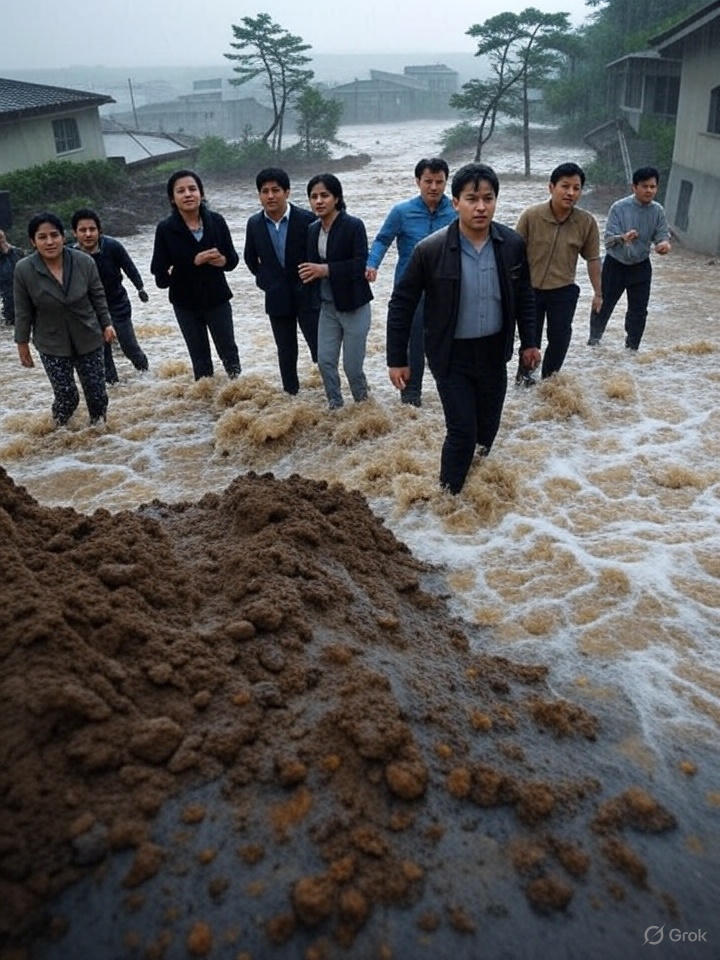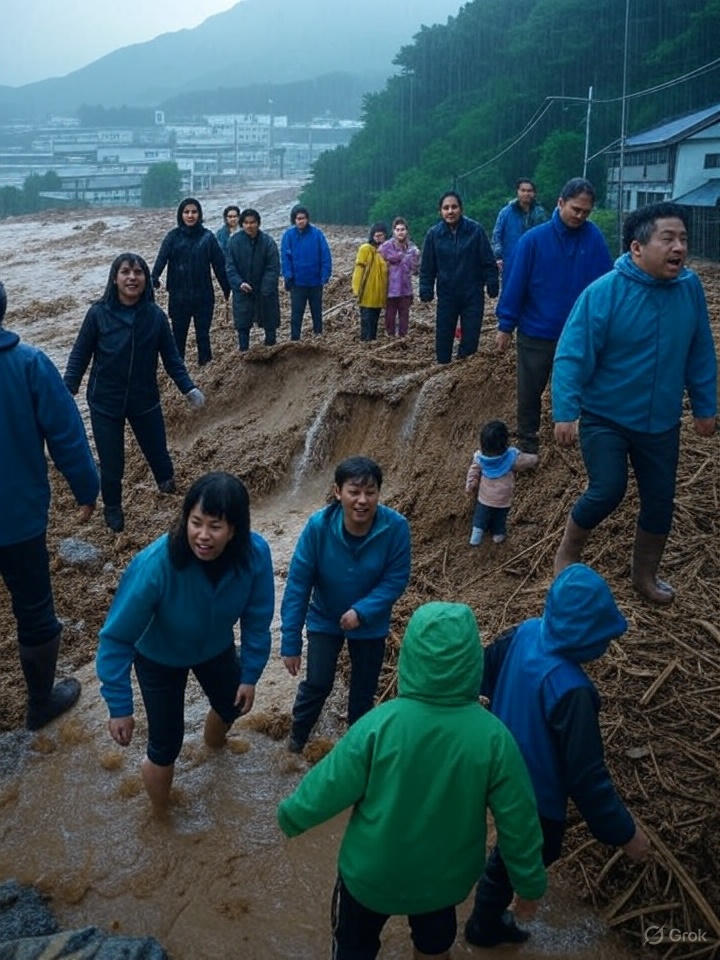South Korea has been battered by a powerful monsoon system since July 16, 2025, leaving at least 14 confirmed dead and 12 missing due to devastating landslides and flash floods across the southern and central regions (AP News).
Extent & Timeline of the Disaster
- The relentless rain began mid‑week and persisted until July 20, bringing an astonishing 600–800 mm (24–31 in) of rainfall in some southern counties (AP News).
- The torrential deluge shifted northward during its course, continuing to flood central areas and prompting landslide warnings (Reuters, AP News).
Deadly Landslides & Flooding
- Sancheong County (South Gyeongsang Province): Major landslides struck mid‑week, collapsing homes and sweeping residents away—resulting in 8 deaths and 6 missing (AP News).
- Gapyeong (Gyeonggi Province): On July 20, a landslide buried houses and flash floods dragged away vehicles—killing at least 2, with 4 still missing (Reuters).
- Additional fatalities occurred elsewhere: 1 person drowned in a car in Osan, and another perished in house and wall collapses in Gwangju and other areas (AP News).

Emergency Response & Evacuations
- Roughly 3,840–10,000 people were evacuated to emergency shelters, depending on varying reports (AP News).
- Government teams, local authorities, and rescue personnel were deployed nationwide, with alerts lifted only after the rain finally subsided on July 20 (Reuters).
Infrastructure & Agricultural Damage
- Over 2,000 public buildings, nearly 2,300 private homes, and more than 1,900 roads were reported damaged due to floodwaters, landslides, and debris flows (Al Jazeera).
- Livestock and rural farmland also suffered heavily; aerial and on-ground footage revealed mud-covered villages and submerged fields (The Annapurna Express, Deutsche Welle).
Weather Insights & Climate Factors
- The Korea Meteorological Administration called this event a “once-in-a-century” storm, citing record-breaking hourly rainfall (Telegraph).
- Such destructive patterns align with climate studies showing increased frequency of extreme weather events, including more intense monsoon bursts (Deutsche Welle).
Government & Public Response
- President Lee Jae Myung ordered disaster zones to be officially declared and mobilized multi-agency relief efforts (Telegraph).
- Rescue, evaluation, and recovery operations are ongoing, focusing on locating missing persons and repairing damaged infrastructure.
Context & Historical Comparison
- South Korea has experienced similar rain-induced disasters before:
- However, the 600–800 mm observed this week ranks among the most intense rainfall episodes outside these major events (ABC News).
What Lies Ahead
- Continuing search efforts for the 12 missing individuals.
- Emergency reconstruction and infrastructure repair, focusing on homes, roads, and farmlands.
- Assessment of flood defenses and review of early-warning, land-use, and disaster preparedness systems.
- Climate adaptation strategies, as extreme rainfall becomes more common due to global warming.
Conclusion
Between July 16–20, 2025, South Korea endured a catastrophic monsoon event that unleashed life-threatening landslides and flooding, taking at least 14 lives, displacing thousands, and causing extensive property and agricultural damage. The crisis underscores the urgent need for strengthened resilience against extreme weather, improved land management, and upgraded emergency response systems in the face of a changing climate.

